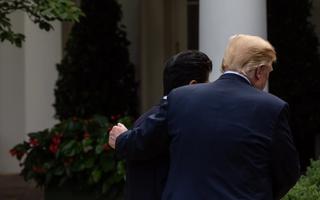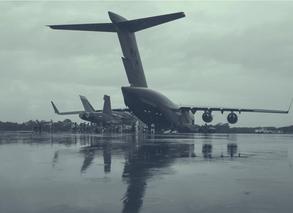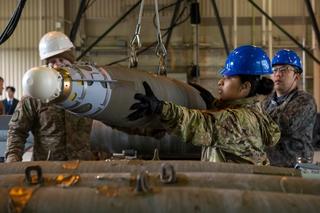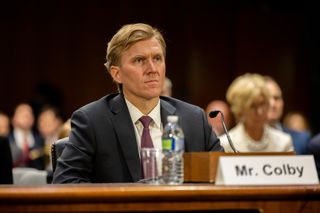The US–Japan alliance has remained the key pillar of Japanese foreign and security policy since 1951, but it has not remained static. The alliance is now facing significant uncertainty with major political changes in both countries. The return of US President-elect Donald Trump has raised familiar questions about US commitment to its alliances and reviving threats of economic punishment for allies and adversaries alike.
Facing what Japan’s 2022 National Security Strategy called ‘the most severe and complex security environment since the end of WWII’, the US and Japanese governments concluded that their alliance has reached ‘unprecedented heights’, with deeper bilateral military integration being paramount for these achievements.
The security environment surrounding Japan is deteriorating. China and North Korea have modernised and advanced their nuclear capabilities, raising doubts about US extended deterrence. This may bring back Trump’s idea of letting South Korea and Japan develop their own nuclear weapons instead of being dependent on the US nuclear umbrella — which could be deeply destabilising in an already tense region. What these developments mean for the immediate future of the US–Japan alliance remains unclear.
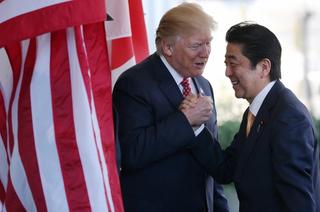
Japan also has a new leader — Japanese Prime Minister Shigeru Ishiba replaced Fumio Kishida in October 2024. Ishiba has already endured a significant political setback, with the LDP and its coalition partner Komeito losing their parliamentary majority for the first time since 2009 after a snap election. Ishiba will likely face challenges posed by empowered opposition parties — the Constitutional Democratic Party of Japan and the Democratic Party for the People are opposed to tax increases, making it harder for Tokyo to fulfil its pledge to double defence spending to 2 per cent of its GDP by 2027.
Ishiba has stated his intention to elevate the alliance to new heights in partnership with Trump, suggesting that there would be greater reciprocity in the relationship — such as the potential rotation of Japanese forces to Guam.
Reflecting on Trump’s first term in office offers mixed indicators of what may happen. Despite Trump’s hard bargain on burden sharing, Japan found ways to channel the president’s instincts on China in a constructive direction. Former Japanese prime minister Shinzo Abe proposed his Free and Open Indo-Pacific idea and revived the Quad, with these ideas being adopted by the Trump team as central elements of a strategy to counter China’s regional influence. For Abe, this demonstrated that Japan would take a leading role in promoting regional stability.
Japan was able to carry this momentum forward with the Biden administration. This included modernising the bilateral alliance, consolidating the Quad and trilateral defence partnership with Australia and creating or reviving other minilateral arrangements.
While Japan continued engaging with these minilateral groups with the United States, Tokyo simultaneously explored alternative equal partnerships without the United States. Japan, the United Kingdom and Italy signed a treaty to develop next-generation fighter jets under the Global Combat Air Programme in December 2023. In addition, senior officials and experts from Japan, South Korea and Australia gathered in Sydney in June 2024 to discuss potential Australia–Japan–Korea trilateral cooperation.
Perhaps due to the success of these collective initiatives — in addition to the deteriorating regional security environment and Trump’s transactional and ‘America First’ approach to foreign policy — Ishiba may push these bilateral and minilateral cooperative agendas even harder during the second Trump administration. For instance, the LDP set up a working group to discuss Asian security issues in November 2024, paving the way for Ishiba to publicly advocate for an ‘Asian NATO’.
This idea is not new. But this time, Ishiba emphasised that Ukraine today ‘may be the East Asia of tomorrow’ — equating Russia with China. While the proposal has proven controversial with key partners like India, Ishiba’s Japan is demonstrating a commitment to pulling its weight when it comes to regional security.
A key difference is that Japan is now more intertwined with the United States and other regional partners than it was under Trump 1.0. Even the degree of integration in Japan’s Australia–US and South Korea–US trilateral security arrangements is a far cry from four years ago, as evidenced by newly established trilateral security consultation bodies to align their regional security policies and objectives.
Japan is also seeking to strengthen regional partnerships through the transfer of defence equipment. In 2023, Japan exported coastal radar systems to the Philippines for the first time and signed a deal with India to export naval stealth antennas. Japan’s upgraded Mogami-class frigate was also shortlisted for the Royal Australian Navy’s future general purpose frigates.
But even with these developments, Tokyo will need to prepare for difficult alliance conversations ahead. And despite Japan’s drastic increase in defence spending, some experts argue that this is still not enough. With allied defence spending a renowned pet peeve for Trump, the Japanese government has their work cut out for them.
Japan is better prepared for the opportunities and challenges that may come with a Trump presidency than it was in 2017. But Japan should remain vigilant in the face of a deteriorating security environment, with the United States being a more mercurial and transactional alliance partner.





